
We offer a comprehensive curriculum developed by an international team, experienced teachers, and a focus on individualized and project-based learning.

We offer a comprehensive curriculum developed by an international team, experienced teachers, and a focus on individualized and project-based learning.
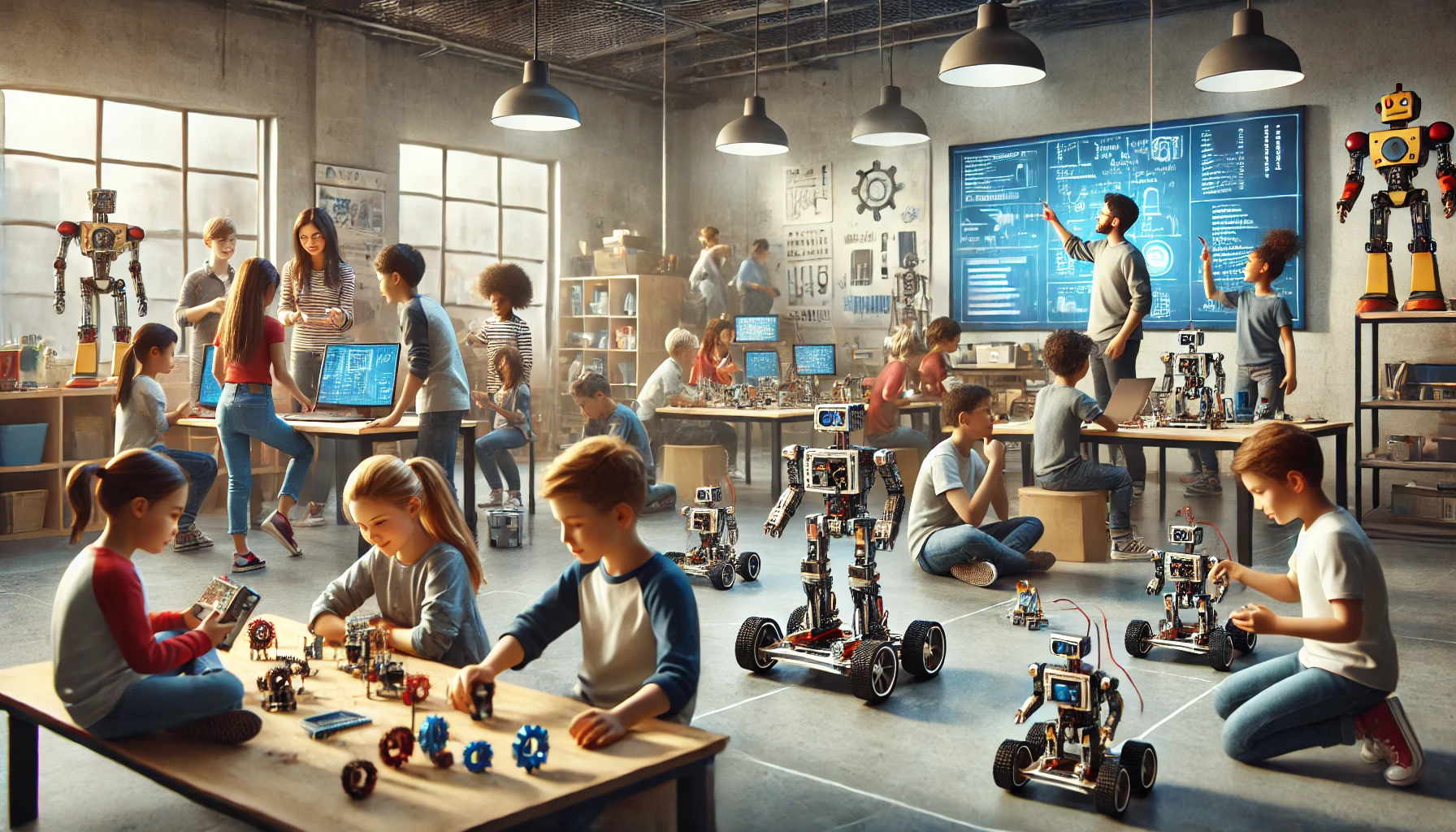
Imagine giving children a tool that not only sparks creativity but also builds skills they’ll use for life. That’s the power of robotics classes. By blending fun with hands-on learning, robotics helps kids grasp complex ideas like problem-solving, coding, and teamwork.
It aligns perfectly with today’s push for tech-driven education, making it a must for young learners. Whether you’re a teacher, a parent, or an educational institution, offering robotics can prepare children for both current and future challenges.
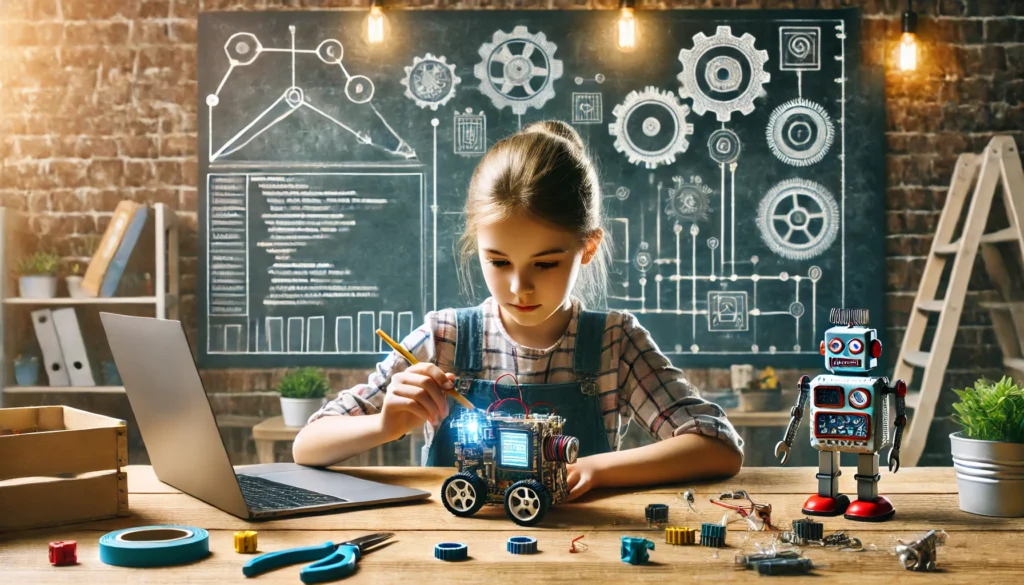
Robotics education is more than just assembling machines or programming sequences. It’s a hands-on approach to learning that blends creativity with technical skills, equipping young learners with tools to solve real-world challenges. From coding basics to engineering principles, robotics fosters a deeper connection to STEM concepts, making these subjects engaging and accessible.
Robotics classes combine multiple disciplines into one cohesive learning experience. These classes typically involve:
Each session is designed to encourage experimental learning. Children might troubleshoot why their robot isn’t moving or collaborate with peers to refine designs. These small yet significant tasks teach persistence, teamwork, and logic.
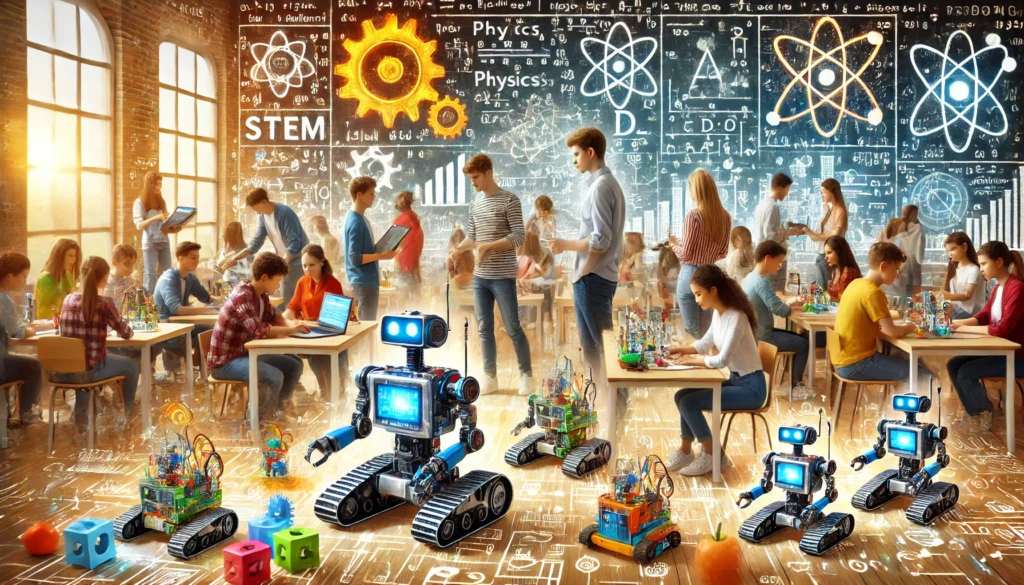
Robotics is a vital piece of the STEM puzzle. By combining science, technology, engineering, and mathematics into one activity, it provides a natural platform for interdisciplinary learning. Think of it as a bridge that connects theory to practice.
Here’s why robotics is essential in STEM education:
Robotics isn’t just about machines; it’s about fostering adaptable thinkers who can innovate in any field. It’s no wonder forward-thinking educators integrate robotics into their STEM curriculum.
Robotics classes are an amazing way to introduce kids to critical thinking. These programs do more than just teach coding or assembling machines—they challenge young learners to think on their feet, solve complex problems, and reason logically.
The excitement of building something tangible gives students a sense of accomplishment while equipping them with skills they’ll use in school and life. Let’s explore how robotics nurtures critical thinking through problem-solving and logical reasoning.
When working on robotics projects, students face challenges that mirror real-world situations. For example, they might need to design a robot capable of picking up objects or navigating a maze. These aren’t just tasks—they’re puzzles that push students to think critically and creatively.
Robotics encourages structured problem-solving:
Every misstep in a robotics project shifts from being a “failure” to a valuable lesson. These experiences teach kids to anticipate problems, think critically under pressure, and persist until they achieve a solution. It’s no wonder robotics is such a powerful tool for shaping problem-solvers.

Programming robots demands a level of logical thinking that most other activities simply don’t. Kids must break down tasks into smaller steps and write instructions their robot can follow without confusion. For instance, turning a robot left isn’t as simple as saying, “Turn left”—students have to factor in angles, timing, and even environmental obstacles.
Here’s how robots foster logical reasoning:
Logical reasoning transcends the robotics classroom. As learners get used to thinking in systems and processes, they build skills that apply to everything from math equations to daily decision-making. Robotics doesn’t just prepare kids for tech-based careers; it makes them sharper thinkers overall.
Creativity is the heartbeat of innovation, and robotics education serves as the perfect catalyst to unlock both in young learners. Through guided projects and hands-on exploration, children go beyond simply following instructions—they imagine, build, and innovate. Robotics classes provide the environment and tools for students to create, experiment, and transform abstract ideas into tangible solutions.
There’s no better way to spark creativity than by working on real, hands-on projects. Robotics classes immerse students in activities where they actively build and program their creations. Think about it—what’s more engaging for a child: working out of a textbook or assembling and coding a robot to solve a specific problem? The hands-on nature of robotics transforms learning into doing, which helps ideas stick.
These projects allow kids to:
The result? Students don’t just absorb knowledge—they shape it. Every small win, like getting a robot to move, encourages them to explore new challenges and ideas.
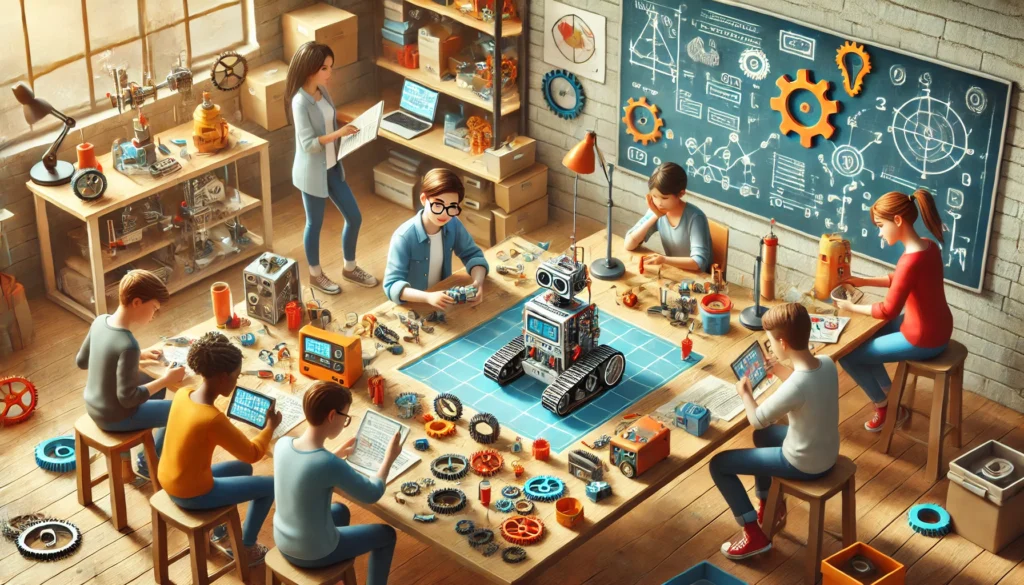
When students design their robots, they’re not just assembling pre-made models—they’re creating custom solutions to unique problems. This process mimics real-world engineering challenges, where there’s rarely one clear answer. Whether programming a robot to clean up spills or navigate around furniture, kids have to think critically about how to get their ideas to work.
Here’s what designing custom solutions teaches:
These moments of problem-solving are where real innovation happens. Everyone’s design is different, reflecting their unique thought process. Students learn not just how to tackle a problem, but also how to make their solutions smarter and more efficient. Robotics education fosters this dynamic approach, preparing kids to face unpredictable challenges in the future.
Robotics classes create the perfect environment for fostering teamwork and collaboration. These projects aren’t solo endeavors—they thrive on shared ideas, joint problem-solving, and mutual support. Every task, from assembling a robot to coding its functions, highlights the importance of working together. Robotics encourages students to rely on each other’s strengths while building skills critical for both academic and real-world success.

Teamwork is at the heart of robotics classes. Group projects require students to come together to achieve common goals, whether that’s programming a robot to navigate a maze or building a functional prototype. These experiences teach kids how to share responsibilities, delegate tasks, and keep a project moving forward.
Imagine this: one student may excel in coding, while another shines in design. By dividing roles, students leverage individual talents to strengthen the whole team. They learn that collaboration isn’t just about doing your part—it’s about lifting each other up. This dynamic is similar to how workplaces operate, making it a vital early lesson for young learners.
Group robotics projects also teach students how to handle disagreements. Deciding how to solve a programming bug or choosing materials for construction encourages open discussion and compromise. These moments show students the value of listening, negotiating, and respecting diverse viewpoints.
Effective teamwork doesn’t happen without strong communication. In robotics classes, students quickly realize how vital clear, concise communication is when collaborating. They must discuss ideas, explain designs, and share feedback in ways their team can understand and act upon. Without proper communication, tasks can spiral into confusion or missteps.
Take coding, for example. If a student discovers an error in the program, they need to explain it clearly so their teammates can collectively fix it. Similarly, when presenting a completed robot, students refine their ability to articulate how it works—a skill that instills confidence and sharpens verbal skills.
Robotics naturally fosters public speaking and presentation skills. Students often showcase their projects to their peers or even their teachers, helping them practice how to communicate ideas effectively in front of an audience. This translates to confidence not just in robotics but also in school and life.
The world is changing rapidly, and today’s students will face a workplace that looks very different from today. Robotics classes give young learners tools to stand out in these modern job markets. By building skills that are in high demand and fostering technological fluency, these programs prepare them for a tech-driven future.
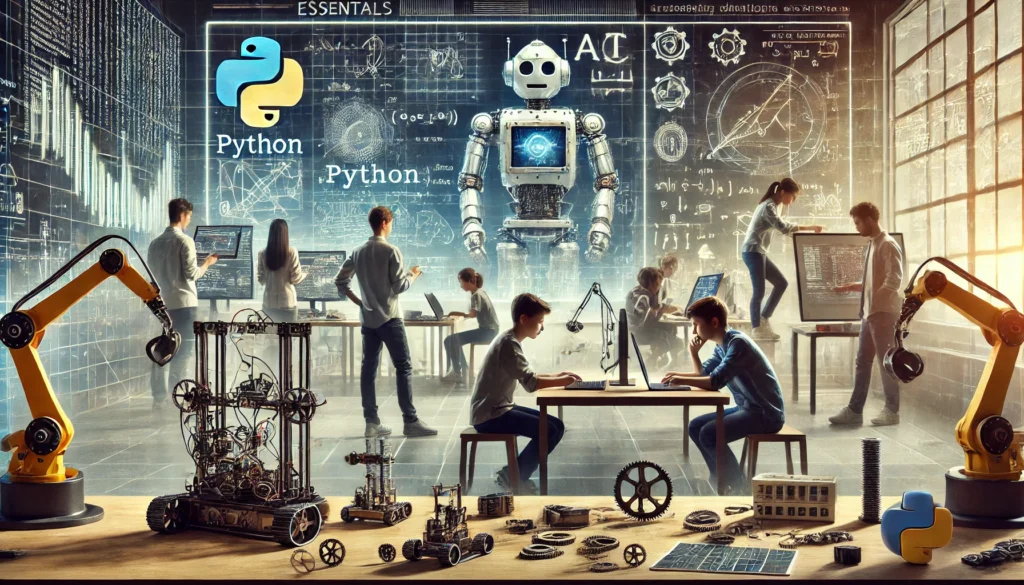
When it comes to future careers, certain skills stand out. Robotics classes equip students with many of these, keeping them ahead of the curve in competitive industries like technology, engineering, and AI. Here are some key skills students gain from robotics:
These skills aren’t just technical—they’re human skills, too. Employers value employees who can think critically, communicate effectively, and work well in teams. By starting early with robotics classes, students are building the foundation for roles in software development, system design, AI research, and more.
We’re living in a tech-centered world, and it’s only becoming more so. From smartphones to AI-driven tools, the future will require workers who are not only comfortable with technology but fluent in it. Robotics classes are an excellent way to build this fluency.
Through these programs, students don’t just use technology—they learn how it works. For example, programming a robot to follow a path requires understanding logic, algorithms, and processes. These foundational lessons translate to a variety of tech fields, including data science, software development, and engineering.
Here’s how robotics makes students fluent in technology:
By learning robotics, students build the confidence and practical knowledge they’ll need to adapt to emerging technologies, from machine learning to smart automation. Robotics isn’t just preparation for STEM careers—it’s preparation for a world that increasingly demands tech literacy.
Bringing a growth mindset into classrooms equips young learners with the tools to tackle challenges with confidence. Robotics classes, in particular, create an environment where students learn to view obstacles not as roadblocks but as opportunities to grow. By handling setbacks and taking on challenges head-on, learners cultivate essential life skills that go far beyond programming robots. Let’s explore how this happens.
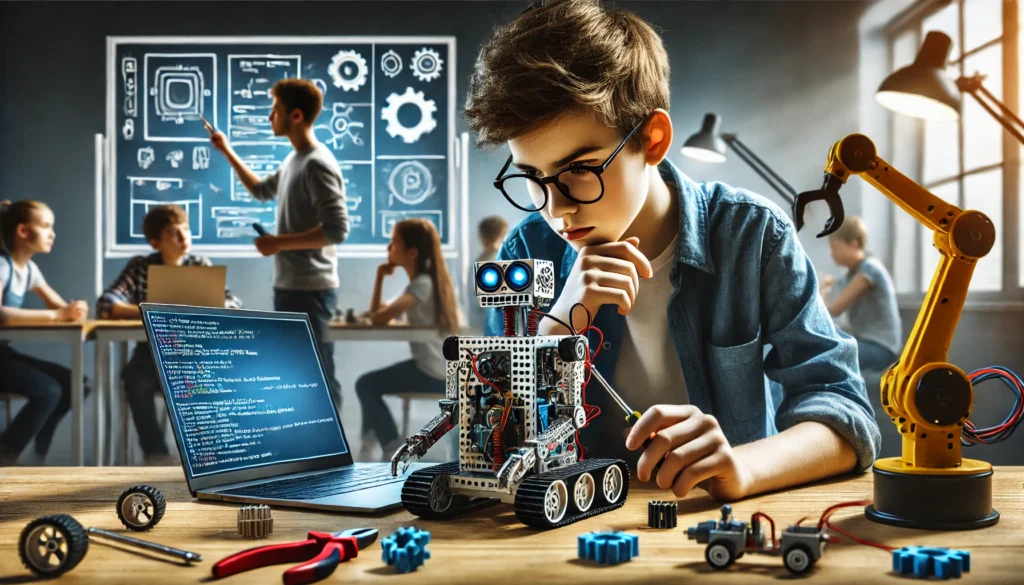
In robotics, failure isn’t the end—it’s just the beginning of learning. Think about it: When a robot doesn’t execute a command, students need to uncover why. Did they miss a code line? Was a part assembled incorrectly? Troubleshooting these issues strengthens their ability to handle setbacks.
Failing in a robotics class is less about being “wrong” and more about discovering what doesn’t work. You’ve likely heard the phrase, “fail fast, learn faster.” That’s the essence of resilience. Robotics gives students a safe space where mistakes aren’t stigmatized but celebrated as part of the process.
How does troubleshooting build resilience?
Every failed attempt to fix a robot is a step closer to success. With each error, learners gain a deeper understanding of the system and themselves. This mindset transcends robotics, preparing kids to face future challenges in school, work, and life with a “never give up” attitude.
Challenges in robotics aren’t just unavoidable—they’re essential. Each project presents hurdles that demand critical thinking and creative solutions. Whether it’s programming a robot to navigate a maze or designing one that can lift objects, these tasks push students out of their comfort zones.
Why are these challenges so impactful? Because they mimic real-life scenarios, offering learners a chance to develop grit and problem-solving skills in a hands-on way. Facing these challenges head-on shows students that growth doesn’t come from ease—it comes from pushing boundaries.
How do robotics challenges help students grow?
Much like stretching a rubber band, challenges in robotics help students extend their problem-solving abilities. Overcoming these hurdles rewires how they perceive future difficulties—less intimidating, more achievable.
When it comes to robotics education, the role of parents and educators is pivotal in shaping young learners’ experiences. Their involvement not only enhances the student’s journey but also creates a community of support and encouragement around STEM learning. Engaging parents and teachers ensures that children receive guidance both inside and outside the classroom, fostering growth in critical skills like problem-solving and collaboration.

Supporting a child’s journey in robotics doesn’t have to be complicated. Parents and educators can take simple yet effective steps to make a lasting impact on students’ development in this field.
Future Classroom plays an instrumental role in bringing robotics education to the forefront. As Southeast Asia’s largest cloud-based coding platform, it provides innovative programs backed by AI to equip students with 21st-century skills. If you are a parent or educator looking for comprehensive resources and tools, Future Classroom offers accessible pathways to explore robotics.
What sets Future Classroom apart is our focus on making robotics approachable for all. With over 22,000 active students and 2,000 trained teachers, its programs are tailored to instill skills like coding, engineering, and critical thinking in students from diverse backgrounds. By utilizing its platform, young learners can engage in hands-on projects that prepare them for tomorrow’s workforce.
Ready to empower your child or students with robotics? Explore Future Classroom for tailored programs designed to inspire young innovators. Whether you’re a parent interested in at-home coding or a teacher aiming to implement STEM courses, Future Classroom can guide you at every step.
These programs spark creativity, build problem-solving capabilities, and foster teamwork, all while offering a hands-on understanding of technology. Through robotics, children aren’t just learning—they’re preparing for a future where innovation and adaptability will define success.
As a parent, teacher, or institution, investing in robotics education ensures students are ready to tackle challenges in a tech-driven world. For top-tier robotics programs tailored to young minds, visit Future Classroom and empower the next generation of thinkers and doers.

FutureClassroom is Southeast Asia's largest coding platform for K-12, empowering students with essential skills in Web Development, Game Development, Python, and AI. Aligned with Cambridge and Pearson standards, our platform combines interactive learning and real-world projects to prepare young learners for a future driven by technology.
View all posts
FutureClassroom is Southeast Asia's largest coding platform for K-12, empowering students with essential skills in Web Development, Game Development, Python, and AI. Aligned with Cambridge and Pearson standards, our platform combines interactive learning and real-world projects to prepare young learners for a future driven by technology.
Get all the latest information, support and guidance about the cost of living with kindergarten.
Start Registration